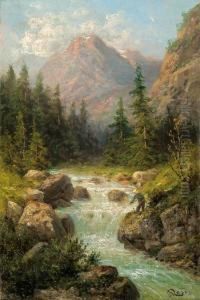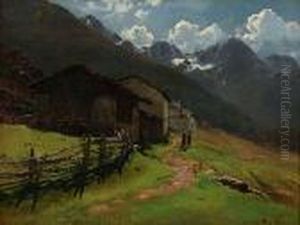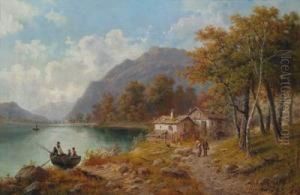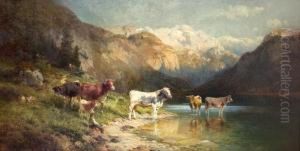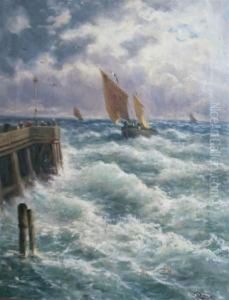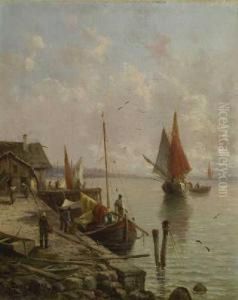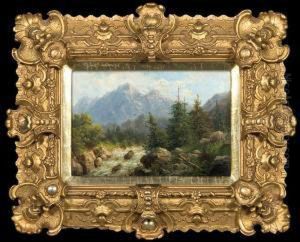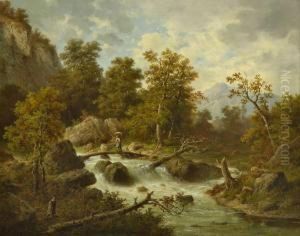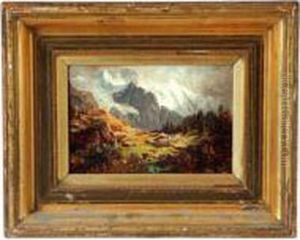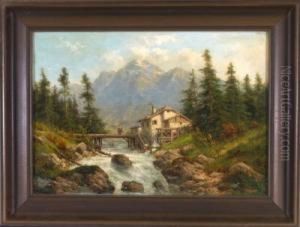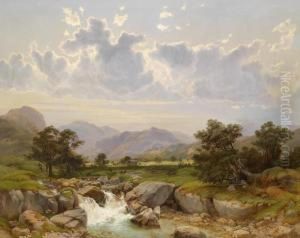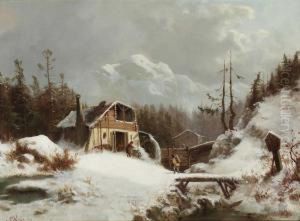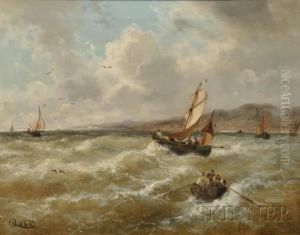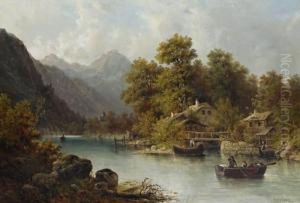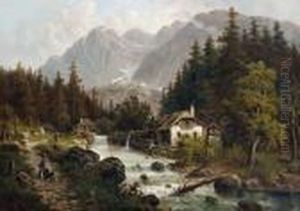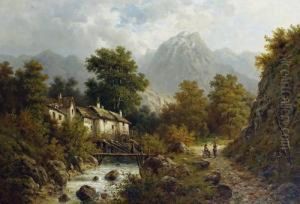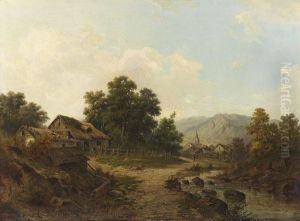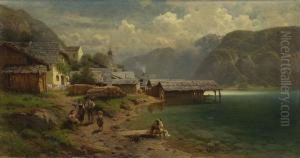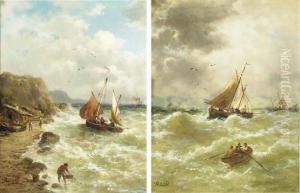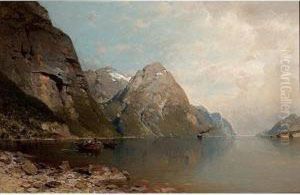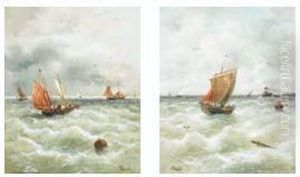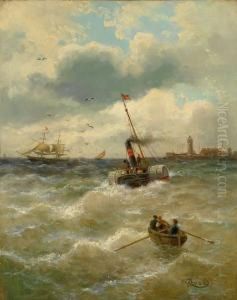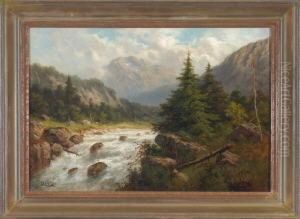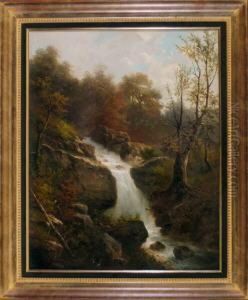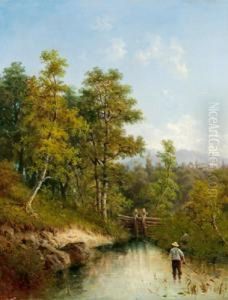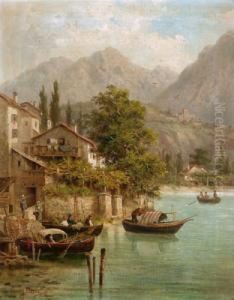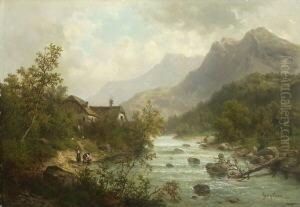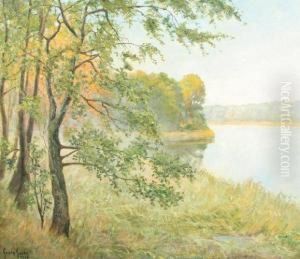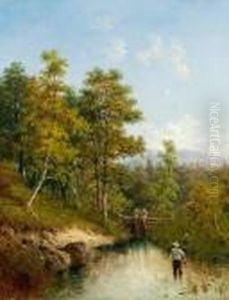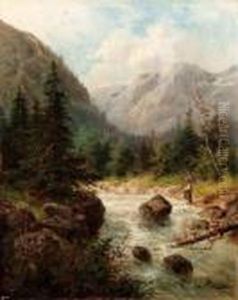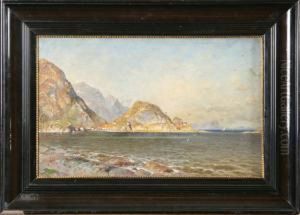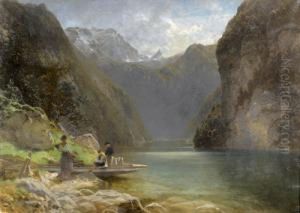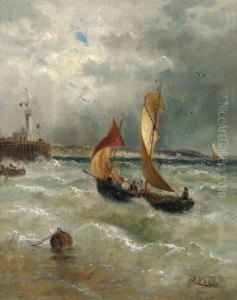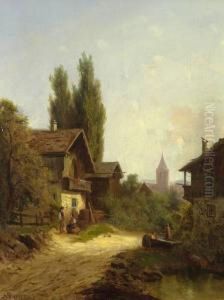Karl Julius Rose Paintings
Karl Julius Rose was a German painter and illustrator, primarily known for his landscape paintings and his contribution to the field of art during the late 19th and early 20th centuries. Born on August 5, 1857, in Naumburg, Germany, Rose grew up in an era that saw the transition from Romanticism to Impressionism in European art.
Rose's early interest in art was supported by his family, and he began his formal training at the Royal Academy of Fine Arts in Munich. There, he was exposed to the works of the old masters, which influenced his technique and his appreciation for the interplay of light and color. During his time in Munich, he also came under the influence of the Barbizon school, a group of French artists who advocated for plein air painting, which would become a significant aspect of Rose's work as well.
Throughout his career, Rose developed a distinctive style that blended traditional landscape painting with the emerging Impressionist sensibility. He was particularly adept at capturing the atmospheric conditions of rural and natural scenes, often depicting the countryside around Munich and the Bavarian Alps. His paintings are characterized by a harmonious palette and a soft, yet precise, brushwork that conveys the tranquility and beauty of the natural world.
In addition to landscapes, Rose also produced a number of illustrations for books and periodicals. His illustrations often featured scenes from German literature and folklore, showcasing his versatility as an artist and his deep connection to German cultural heritage.
Rose's work was well-received during his lifetime, and he exhibited at various art shows, including the Munich Glass Palace exhibitions, which were important events in the German art world at the time. His contribution to German art was recognized by his peers and art critics alike, and his paintings continue to be appreciated for their serene beauty and technical skill.
Karl Julius Rose passed away on November 14, 1922, in Munich. Today, his art is part of several collections in Germany and is studied by art historians interested in the development of landscape painting during this period. His legacy endures as a testament to the enduring appeal of traditional landscape art infused with the innovative spirit of Impressionism.
